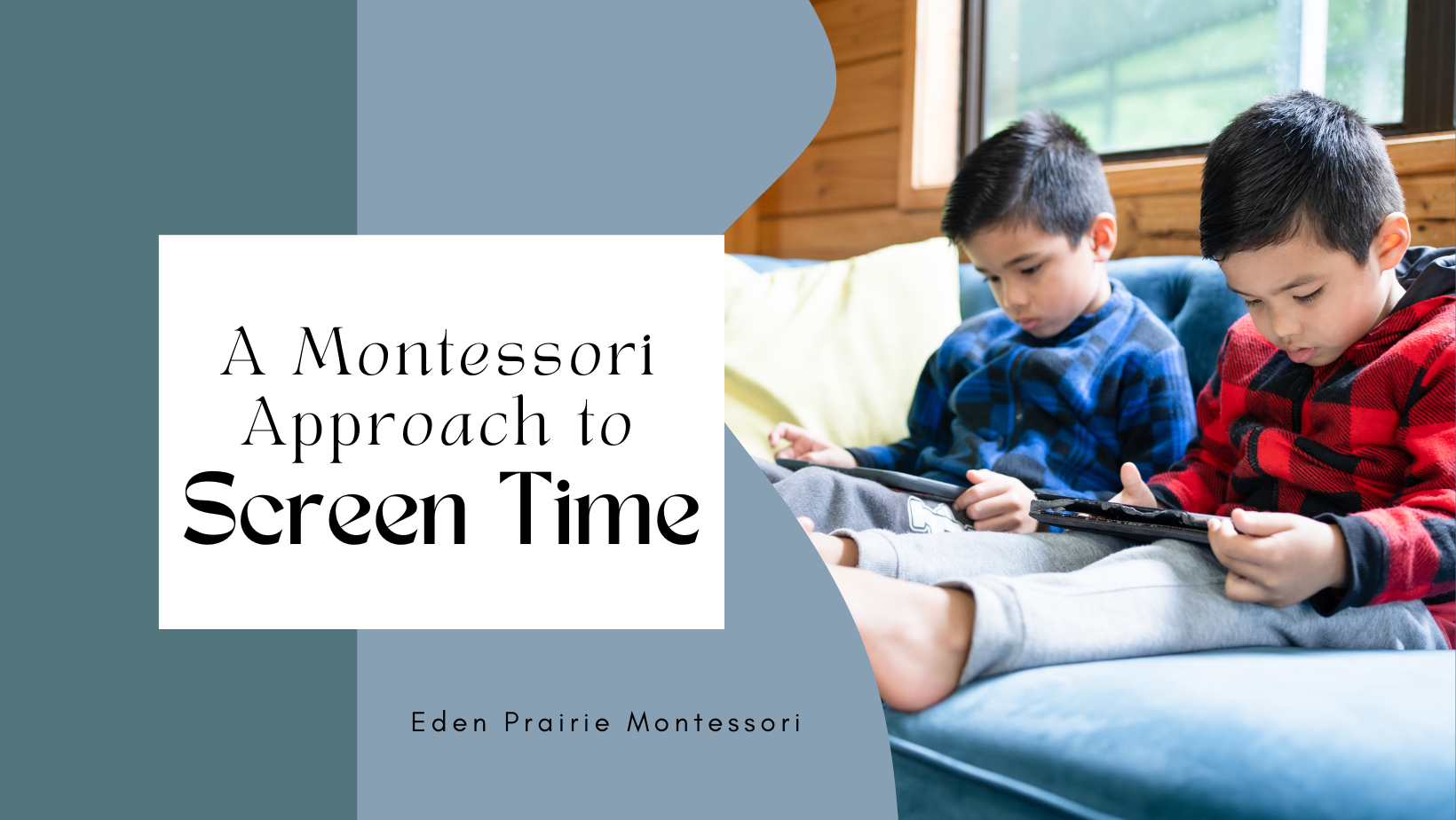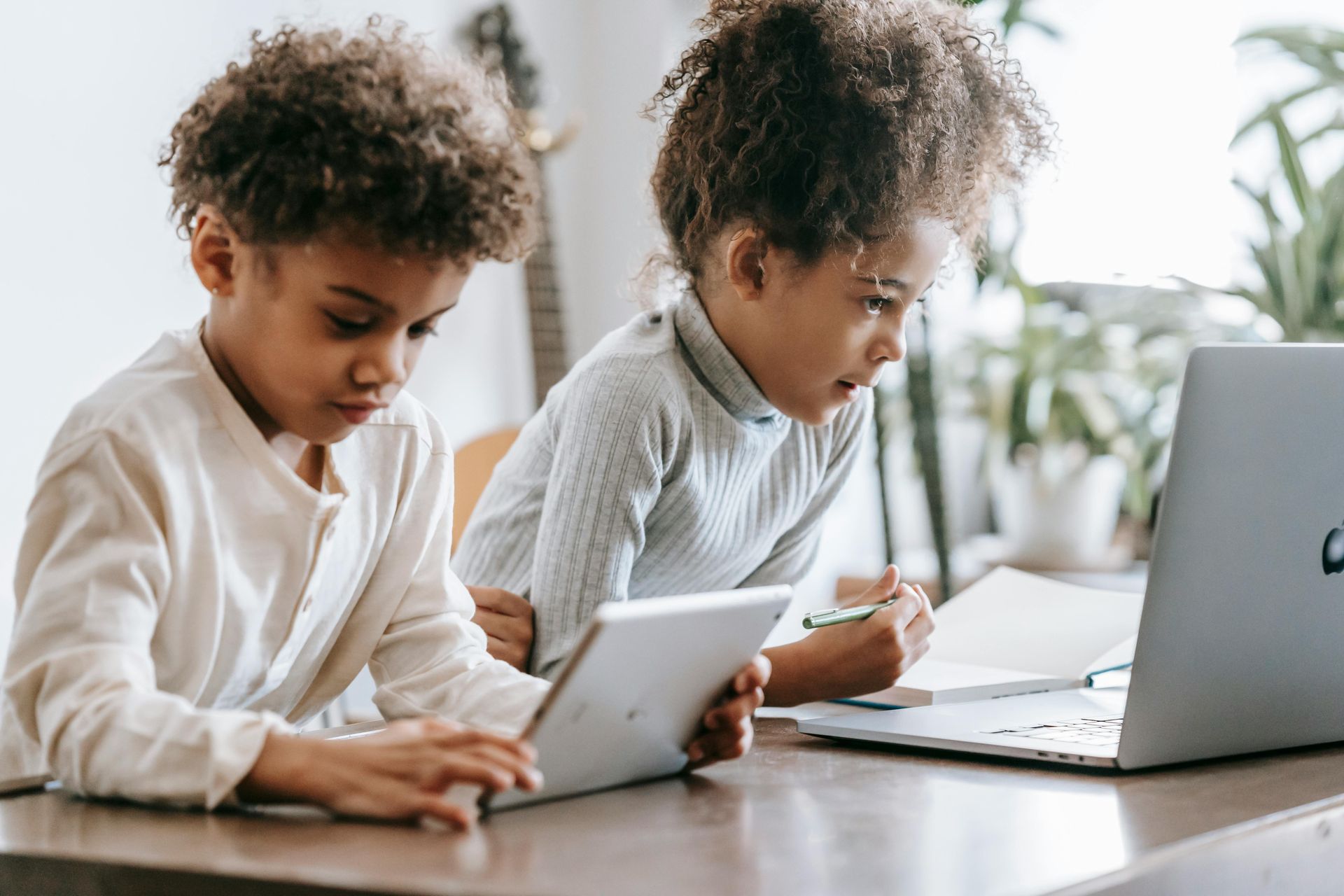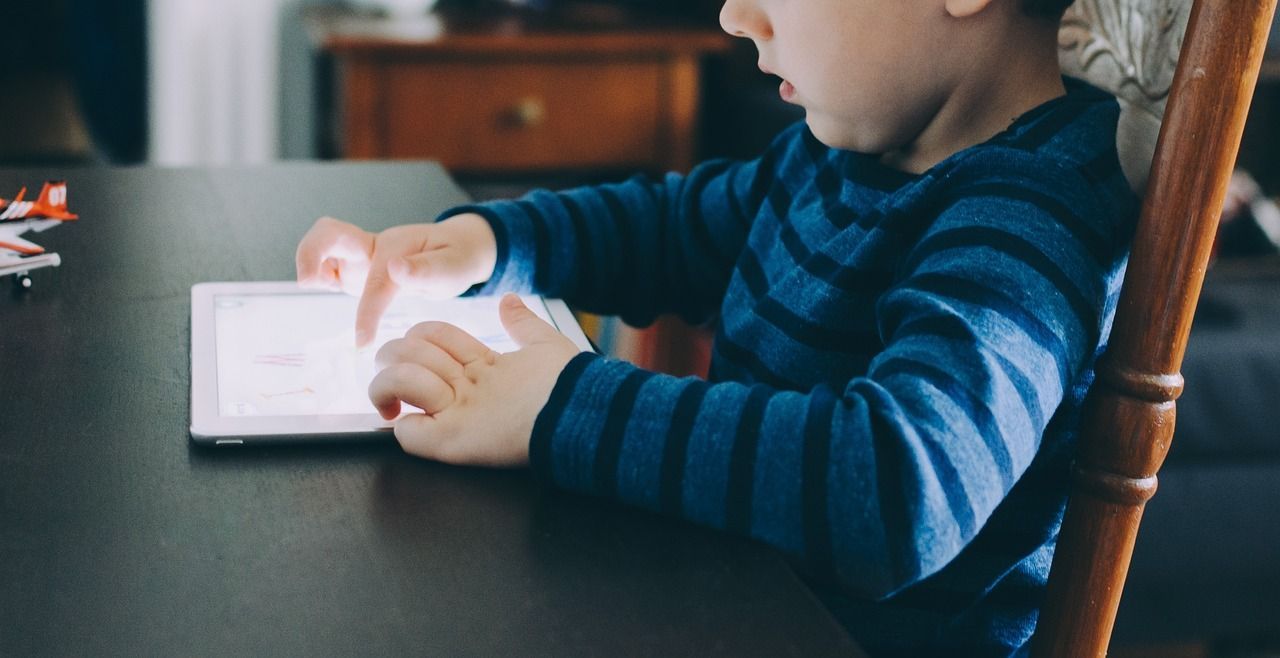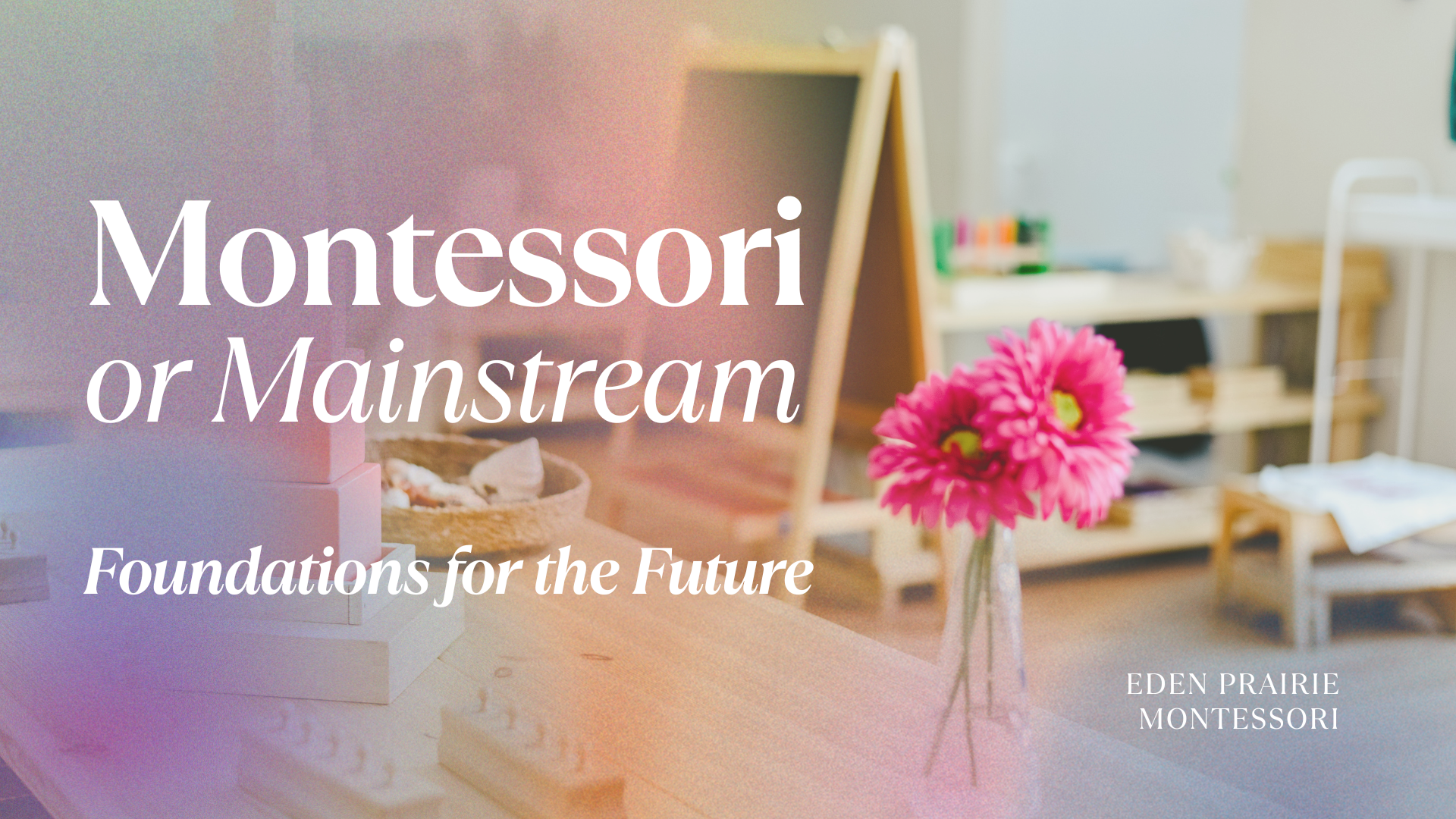Eden Prairie Montessori Learning Blogs
A Montessori Approach to Screen Time
By providing guidelines, we empower children to make mindful choices about their screen usage, aligning with the Montessori principle of self-regulation...

In our modern, bustling world, screens have become familiar tools for both parents and children. It's incredibly tempting to rely on them for soothing and entertaining kids in our fast-paced lives. While screens offer avenues for learning, communication, and relaxation,
excessive screen time can pose developmental challenges for children.
Dr. Maria Montessori stressed the importance of real-world experiences for children under six. Sensory exploration is paramount during these formative years, as it lays the foundation for understanding the physical world. Unlike screens, which provide limited sensory input, real-life interactions allow children to grasp concepts like texture through hands-on exploration
which requires tactile engagement and experimentation.
The Montessori approach to screen time echoes the philosophy of freedom within limits. While children can certainly engage with phones, computers, and handheld devices, it's essential to establish boundaries regarding content and duration. By providing guidelines, we empower children to make mindful choices about their screen usage, aligning with the Montessori principle of self-regulation.

SCREEN TIME RECOMMENDATIONS BY AGE
The American Academy of Pediatrics provides
valuable guidelines for managing children's screen time, including television, mobile phones, and personal computers. According to their recommendations:
Less than 2 years: None at all
2-4 years: Under 1 hour a day
5-17 years: No more than 2 hours a day
Preschoolers should engage in
limited screen time that serves a specific purpose
or forms part of an interactive experience, ideally ranging from zero to 1 hour per day. Beyond preschool, a general rule of thumb is to restrict all children, including teenagers, to 1-2 hours of screen time whenever possible.
Maria Montessori's educational philosophy underscores the importance of immersive experiences for children's learning.
Such experiences engage all the senses, fostering holistic development. Research consistently supports Montessori's approach, highlighting the critical role of real-world experiences in shaping neural pathways during early childhood. While screens offer some stimuli, they fall short of providing the rich, multi-dimensional experiences necessary for optimal development.

IMPACT ON CHILD DEVELOPMENT
What impact does screen time have on children’s literacy, creativity, and imagination – the foundation of child development?
Studies have indicated that exceeding recommended screen time guidelines for children aged 2-3 correlates with poorer performance in developmental milestones between 3-5 years old. MRI scans have revealed notable changes in the brain's architecture among children logging more than 7 hours of screen time daily.
Those surpassing two hours of daily screen exposure tended to score lower on cognitive and language assessments.
While ongoing research delves deeper into these connections, the adverse effects of excessive screen time are evident. It's associated with increased rates of obesity, disruptions in both children's and adults' sleep patterns, and heightened depressive symptoms. Notably,
limiting screen time
to less than 30 minutes daily has shown promise in reducing feelings of loneliness and depression
among participants, as evidenced by one study.
These findings highlight the importance of mindful screen use in nurturing children's holistic development and well-being.

.

WARNINGS SIGNS OF TOO MUCH SCREEN TIME
Recognizing the warning signs of excessive screen time is crucial for safeguarding your child's well-being.
Behavior changes: Experts note the immediate impact of TV and computer time on children, with changes such as increased aggression, impatience, selfishness, or irritability being red flags. If you notice these behaviors, it may be time to reconsider screen time limits, perhaps restricting usage to weekends or even eliminating devices altogether.
Poor sleep: Screens emit a barrage of light and sound, which can disrupt sleep. If your child struggles to fall asleep or stay asleep, it's essential to make adjustments. Studies indicate that the glow from screens can interfere with sleep quality. Avoid placing TVs in bedrooms and centralize device charging in a common area to minimize disruptions and ensure restful sleep for your child.
Weight gain: Be mindful of screen time during meal times. Constant TV presence can not only stifle conversation but also contribute to weight gain. Distraction while eating may lead to overeating or, conversely, loss of appetite, both undesirable outcomes for young bodies. Consider implementing screen-free meal times to encourage mindful eating habits and foster healthier relationships with food.

USING SCREENS AS A LEARNING TOOL
When allowing your child to engage with electronic devices,
it's essential to pay attention to what they're viewing
and how they're interacting with the screen.
Quality content on screens can significantly benefit children
aged 2 years and older by enhancing their social and language skills. Thoughtfully designed, age-appropriate educational programs can instill pro-social behaviors, teaching children peaceful attitudes, empathy, tolerance, and respect.
When selecting apps or programs for toddlers, prioritize interactivity. Look for apps that encourage your child to observe, listen, and engage
with simple instructions they can comprehend. Interactive features allow children to make choices and take control of their learning process, fostering independence and critical thinking skills.
For optimal learning, parents should actively participate in screen time activities with their toddlers, much like reading a book together. By discussing what's happening on the screen,
parents can enhance their child's understanding and learning experience.
Additionally, using screens to connect with real people, such as grandparents via FaceTime, provides valuable social interaction and learning opportunities for toddlers.
Mobile devices equipped with nature exploration apps can extend learning beyond the screen, encouraging outdoor play and discovery. For preschoolers, quality educational content should seamlessly integrate on-screen learning with off-screen experiences, promoting engagement with caregivers and peers while supporting active and imaginative play.

.

SETTING LIMITS AND RULES AROUND SCREENS
When establishing boundaries and rules around screen usage,
consider these helpful tips:
- Choose Content Wisely: Opt for nature documentaries or educational programs that feature realistic images and slow-paced scenes. These types of content are not only engaging but also offer valuable learning experiences for children.
- Select Interactive Programs: Look for content that includes real people engaging in activities such as singing, dancing, or reading. Interactive programs encourage active participation and can enhance your child's engagement and understanding.
- Engage with Your Child: Take an active role during screen time by commenting on the content and interacting with your child. Engaging in discussions or asking questions about what they're watching can deepen their comprehension and make the experience more meaningful.
- Adjust Screen Settings: Use features like a blue light filter or black-and-white mode to reduce the stimulating effects of screens. Lowering brightness levels can also help make screens less attractive, especially before bedtime when you're aiming to create a calm environment.
- Establish Screen Time Boundaries: Set clear boundaries by ending screen time at least 90 minutes before bedtime. This allows your child's mind to unwind and prepare for sleep, promoting better sleep quality.
- Limit Handheld Device Usage: Minimize the use of handheld devices to prevent children from becoming overly reliant on features like playlists and automatic replay. Instead, encourage activities that promote active engagement and creativity.
- Designate Screen-Free Zones: Create designated screen-free areas in your home, such as bedrooms, to promote relaxation and quality sleep. Having specific areas where electronic devices are not allowed can help establish a healthy balance between screen time and other activities.
- Use Timers for Guidance: Set clear limits on screen time and use tools like a kitchen timer to help enforce these boundaries, especially for young children. This provides a visual cue and helps children understand and adhere to the rules.
- Lead by Example: Model healthy screen habits by demonstrating balanced screen usage yourself. Children often learn by example, so showing moderation and mindfulness in your own screen time habits sets a positive precedent for your family.

TIPS TO REDUCE SCREEN TIME IN YOUR HOUSEHOLD
- Turn off the TV during the day to encourage alternative activities and promote more active engagement.
- Embrace screen-free family meals, including phones, to foster meaningful connections and conversation without distractions.
- Avoid eating in front of screens to promote mindful eating habits and discourage multitasking during meals.
- Power down screens at least one hour before bedtime and eliminate them from the bedtime routine to facilitate better sleep quality.
- Integrate screen time management into your daily routine, treating it like any other aspect of your family's schedule. By making conscious decisions about when and how screens are used, you can create a balanced approach to technology in your home.

.

There is not only one "Right" approach when it comes to screens...
In recognizing the diverse approaches families take towards screen time, it's evident that there's no one-size-fits-all solution. Each family's circumstances and routines are unique, shaping how they navigate technology usage with their children. However, being intentional about managing screen time and establishing consistent boundaries can help families find their balance.
As we wrap up our exploration of the Montessori approach to screen time, one principle stands out: balance is essential. While technology can play a role in education, the Montessori philosophy emphasizes a measured and purposeful approach, especially for young children. The focus remains on providing enriching real-world experiences that foster holistic development and lifelong learning.
In Montessori, the goal isn't to reject screens entirely or blindly embrace them but rather to cultivate a harmonious relationship between digital engagement and hands-on exploration. By embracing principles of intentionality, moderation, and mindfulness, we can leverage technology as a tool for learning and discovery while cherishing the invaluable experiences of the physical world.

“Parents learn just like their children do: by seeing and by doing. That’s why we welcome interested families to visit Eden Prairie Montessori while school is in session. Observing our beautiful school, our fun playground, our happy children and their proud presenters – it’s the best way to see what we do!”
If your child is ready to start becoming the best person they can be, you are welcome to schedule a tour of Eden Prairie Montessori with Shonali at your side to answer any questions you might have. You can always reach her at (952) 944-8466 or info@epmontessori.net.









